The Art of the Collar
How Shirt Styles Changed from 1920–1949: The Evolution of the Classic Collar

At Oldfield Outfitters, we believe every shirt has a story—and between 1920 and 1949, shirts had quite a few to tell. Over three dynamic decades, shirt styles shifted dramatically, reflecting the changing world around them. From the buttoned-up days of detachable collars to the easy-going charm of wartime leisurewear, collars in particular tell us a lot about the times.
Let’s take a stroll through history and see how shirt collars went from stiff and starched to stylishly relaxed.
1920s: Dapper Details & Detachable Collars
The Roaring Twenties were all about polish and presentation. Men’s shirts were crisp, white, and most importantly—collarless. Instead, collars were detachable and came in a variety of shapes to suit different occasions. Think of it as the mix-and-match era of shirt fashion.
Popular 1920s Collar Styles:
-

Club Collar: Soft and rounded, this was a favourite of younger gents aiming for a modern, fashionable look.
-
Wing Collar: The go-to for formal evenings—think white tie events and old-school elegance.
-
Straight Point Collar: Neat and narrow, often paired with a tie pin for extra flair.
Women’s shirts and blouses echoed some of the menswear trends but added a softer touch. Lace, sailor collars, and Peter Pan collars brought a playful, feminine edge to the look.
1930s: Softer, Smarter, Sportier
By the 1930s, things started to relax a little. The Great Depression brought practicality into focus, and the starched, detachable collar began to lose its appeal. Shirts became more ready-to-wear, with collars now sewn in—less hassle, more comfort.
Collar Shifts in the 1930s:
-
Point Collar: Still a favourite, but now wider and softer.
-
Spread Collar: A fresh, modern silhouette that opened up the neckline.
-
Button-Down Collar: Originally a sporty feature, this style made its way from tennis courts to everyday wardrobes.
For women, blouses took on a graceful simplicity. Flowing fabrics, delicate pleats, and bow-tied collars offered elegance without fuss.
1940s: Function Meets Fashion
The 1940s were shaped by wartime life. With fabric rationing and uniforms ruling the day, shirts took on a no-nonsense feel—but that didn’t mean they lacked style.
Men’s 1940s Shirt Features:
-
Convertible Collars: Worn open without a tie—ideal for off-duty days or relaxed workwear.
-
Military Touches: Epaulettes, flap pockets, and khaki tones influenced everyday shirts.
-
Wider Collars: Spread and spear-point collars made a statement while keeping structure.
Women’s shirts embraced strength and structure. Sharp collars, shoulder pads, and defined waists reflected the new roles women were taking on—both at home and on the job. Even utility blouses, made with minimal fabric, were cut to look neat and purposeful.
From Formal to Functional: What the Collar Can Tell Us


Over these three decades, shirt collars loosened up—literally and figuratively. What started as a symbol of status and discipline gave way to styles that suited a more mobile, practical lifestyle. But through it all, elegance never went out of style.
At Oldfield Outfitters, we celebrate this evolution with every shirt we make. Whether it’s the tailored charm of a 1920s club collar or the laid-back vibe of a 1940s convertible style, we bring history to life—one well-made shirt at a time.
